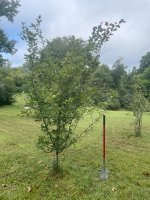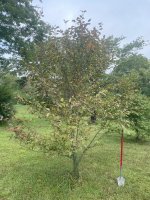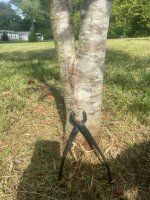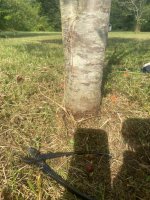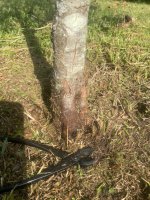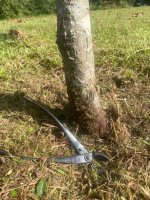Silentrunning
Chumono
5 Years ago I bought 2 flowering crabapple trees with the idea of making bonsai after the trunk developed. I planted them in the ground to encourage the development and promptly forgot about them. They have grown beautifully and now are about 8 feet tall. The trunks will be about 4" in diameter next spring. I would like to cut them back to 18" height next March and start the development of a new apex. Have I missed the window when these could be cut back that short? Would I just kill them? I had thought of cutting them back next year and removing them from the ground the next year. Thoughts?
W
W

